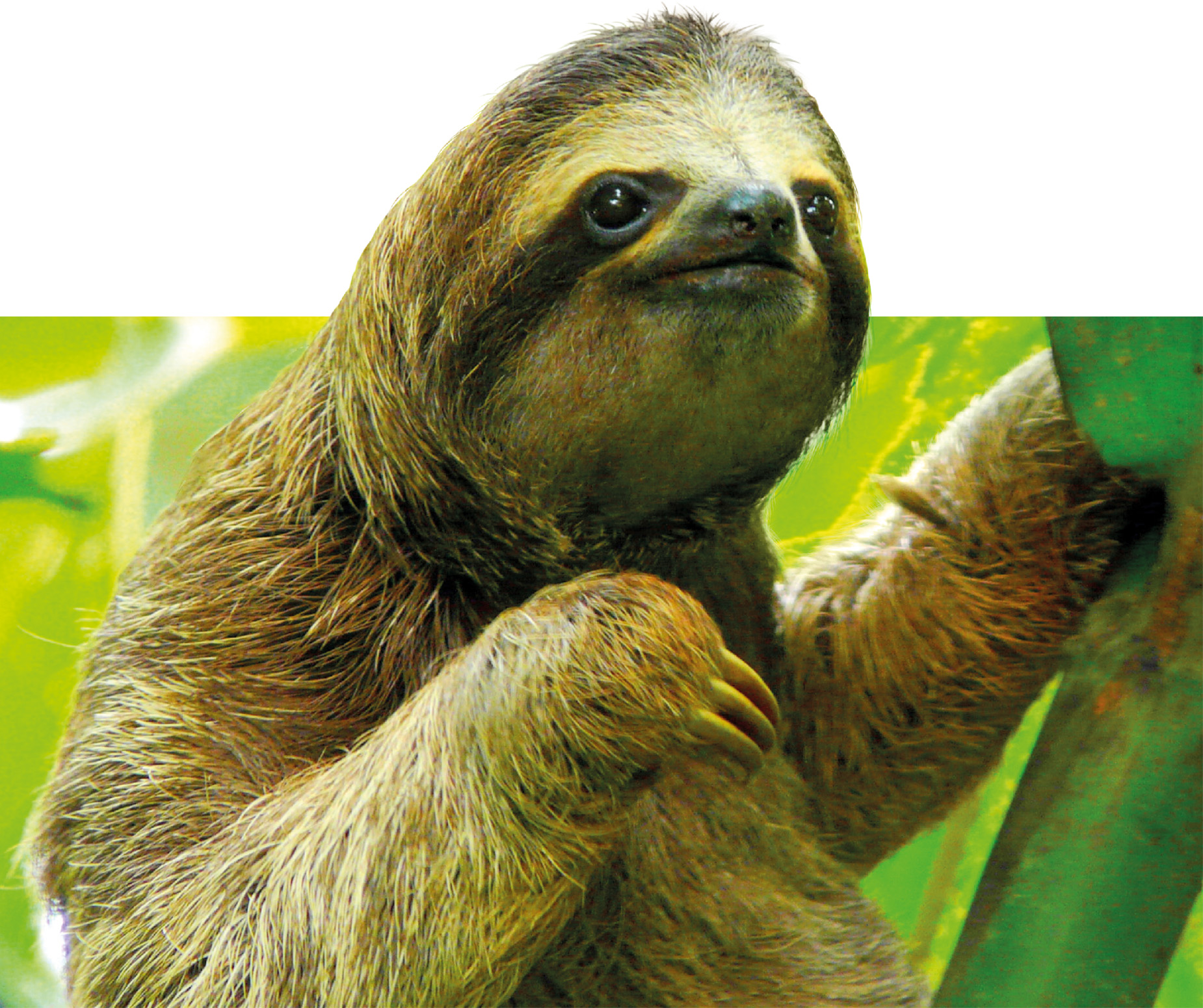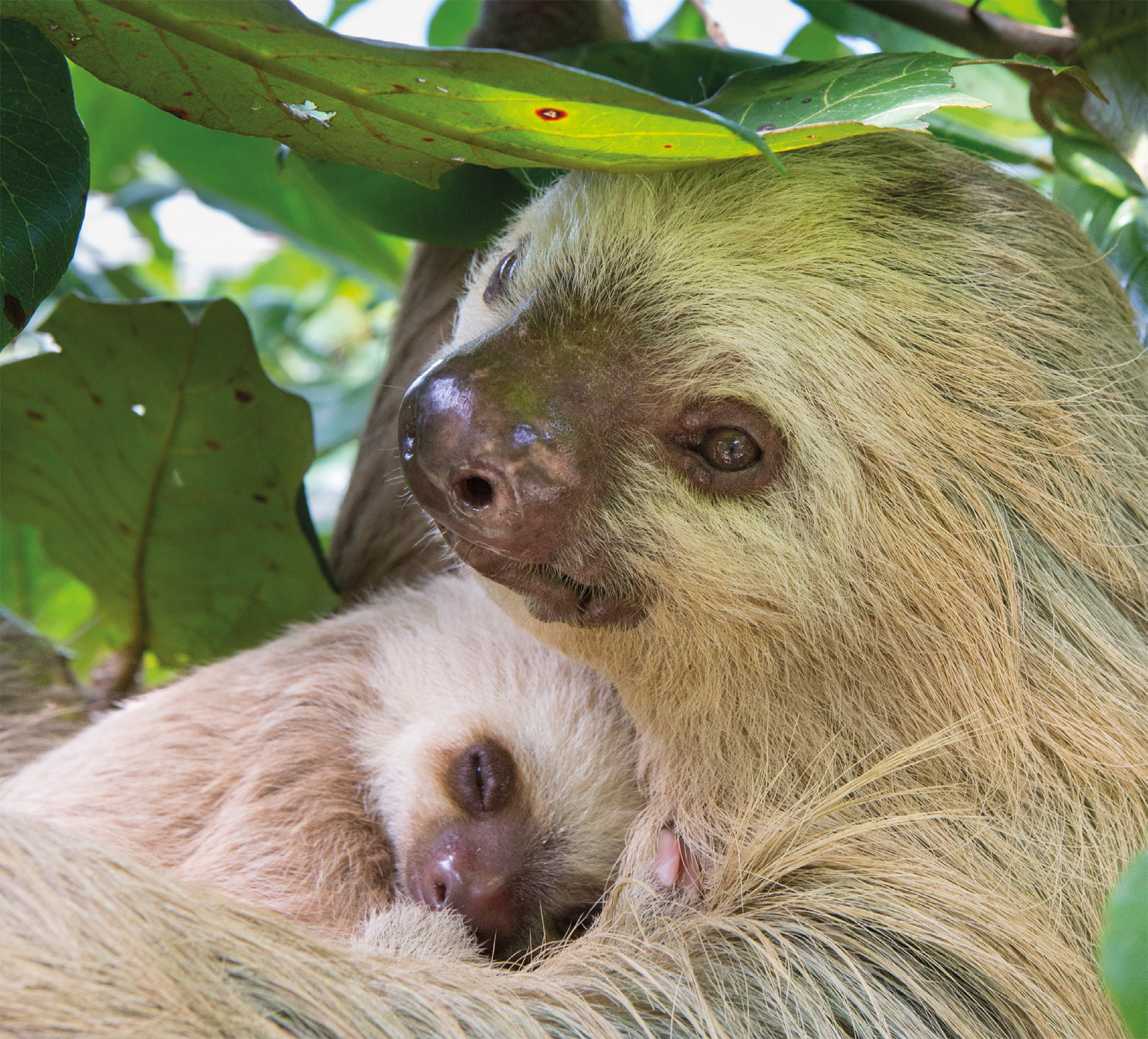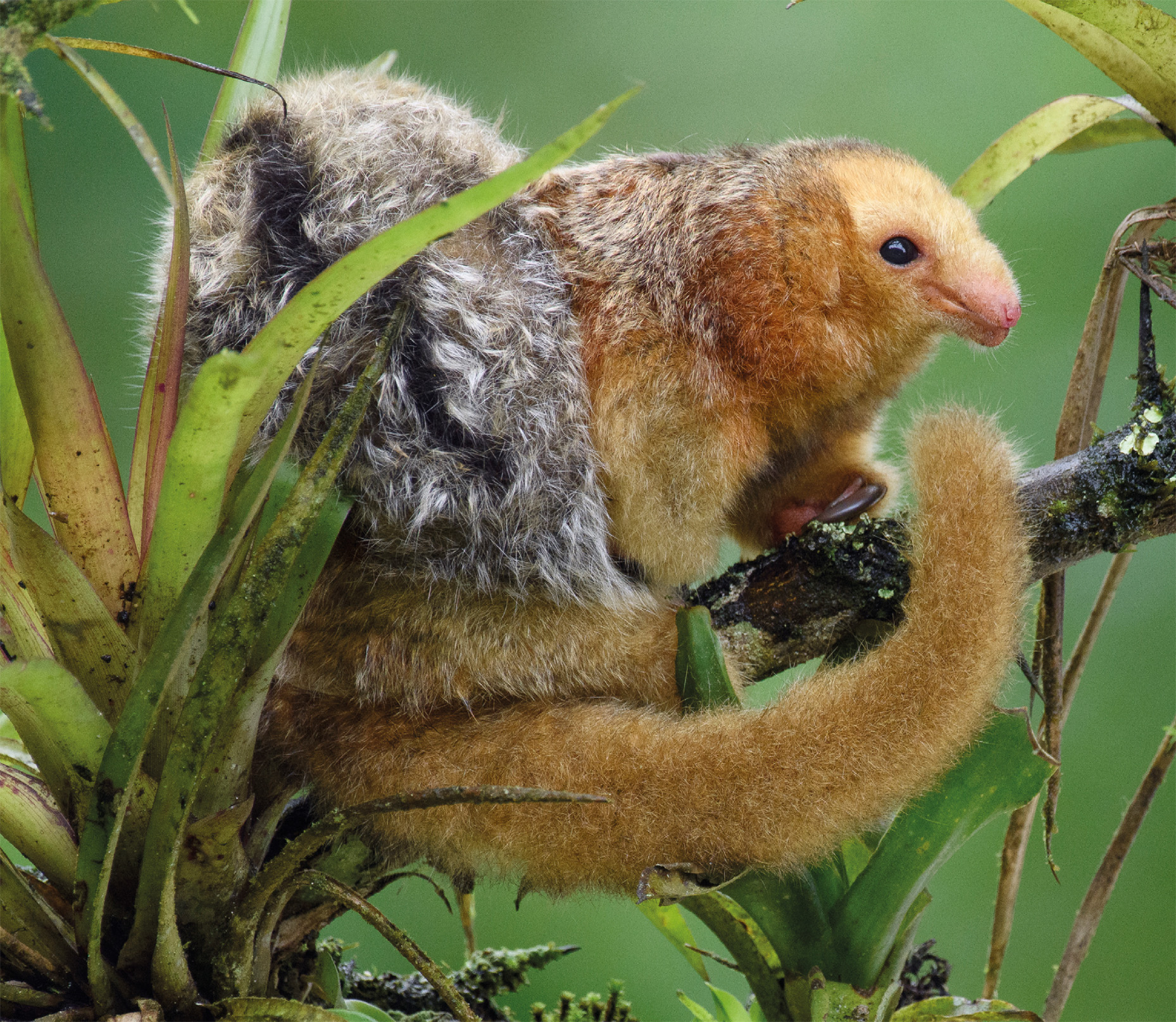FIELD GUIDE Animal Directory
Other Mammals
Costa Rica supports over 200 mammal species. This figure includes about two dozen species of non-felid carnivorous mammals, although most are omnivorous to various degrees. A few are easily observed, while others are highly elusive or rare – the olingo, for example, is a creature of the night and not likely to be readily seen. On the other hand, the raccoon and the coati are diurnal and often become quite bold in approaching lodges and tourists in the hope of being fed. Mammals that are active by day include rodents, ungulates, and the three-toed sloth. There are also approximately 100 species of bats, the only mammals in the world that have evolved for powered flight – their wings are really webbed forelimbs. Exclusively nocturnal, they navigate by emitting ultrasonic squeaks and track the echoes with special receptors. This is known as echolocation.
TAXONOMY
Costa Rica’s mammals, of which there are 260 species, are grouped into 11 orders including carnivores across three suborders: felids, canids, and procyonids (raccoons). Anteaters, tamanduas, and sloths belong to the diverse order Pilosa. Bats, which make up the majority of mammalian species on Costa Rica, belong to the Chiroptera order. Peccaries and deer are among the even-toed ungulates – hoofed animals.
Brown-Throated Three-Toed Sloth (LC)
Species Bradypus variegatus Seen Braulio Carrillo, Cahuita, Manuel Antonio, Tortuguero
The three-toed sloth – more accurately called “three-fingered”, since the two-toed sloth, confusingly, also has three “toes” on its hind limbs – can be seen in every kind of forest in Costa Rica. It has a round face with a blunt nose, a black eye mask, and a prominent forehead, and it can rotate its neck by 360 degrees. Sloths spend virtually their entire lives suspended by their hook-like claws, or otherwise curled up asleep in the forks of branches. Active by day, they feed exclusively on the leaves of several tree species, notably the cecropia. The three-toed sloth’s thick, long gray fur runs from its belly to its back in order to facilitate the drainage of rain while it hangs upside down. Green algae grow on its fur, providing natural camouflage and food for a species of moth.

Hoffmann’s Two-Toed Sloth (LC)
Species Choloepus hoffmanni Seen Cahuita, Corcovado, Tapantí-Macizo
This nocturnal animal has many similarities to its smaller three-toed cousin, but it has only two claws on its forelimbs. It also has a much more extensive diet that includes insects, fruit, and birds’ eggs, as well as plant material. It has a cream-colored face and bulbous brown eyes. Although it is clumsy on the ground, it is a good swimmer. Females give birth to a single baby once a year and carry it clinging on their chests; if a baby falls, its calls are ignored and it is doomed – a meal for snakes, cats, or hawks.

Northern Tamandua (LC)
Species Tamandua mexicana Seen Caño Negro, La Cruz, Santa Rosa
This semi-arboreal mammal, a dedicated eater of ants and termites, supplements its diet with tiny beetles and other insects. The tamandua has a coarse cream coat with a shoulder band and black flanks. It uses its strong forearms and huge claws to tear open ant nests. Its elongated snout tapers to a tiny mouth, through which an extremely long, narrow tongue darts to lick up insects. A long prehensile tail helps to climb trees in its preferred lowland-forest habitats.

Giant Anteater (VU)
Species Myrmecophaga tridactyla Seen Corcovado
The largest of the three anteater species can exceed 7 ft (2.1 m) in length, half being its bushy tail and another 20 in (50 cm) its slender snout. This gray, black, and white mammal shuffles along on its knuckles like a chimpanzee. Its large front claws are perfect for ripping apart termite mounds, but also for defense – the anteater rears up on its hind legs to slash at attackers. This extremely rare animal is now thought to be restricted to Corcovado.

Silky Anteater (LC)
Species Cyclopes didactylus Seen Braulio Carrillo, Corcovado, Monteverde
Also called the pygmy anteater for its relatively small size, this nocturnal animal is arboreal by nature. During the day, it sleeps curled up into a ball high up a tree, and by night, it hunts for ants, termites, and beetles. Resembling a teddy bear, it has soft, honey-colored fur, a short pink snout, and a long prehensile tail. The silky anteater forages in a variety of forest types and nests in tree hollows, where it gives birth to a single pup each year.

